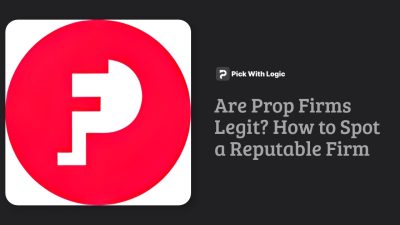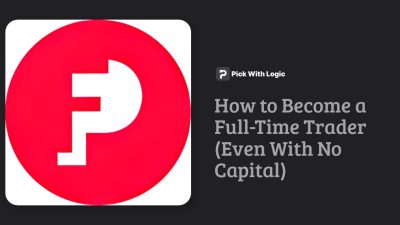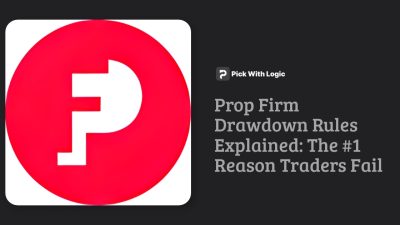Unveil the power of AI trained up to October 2023. Discover cutting-edge insights, transformative potential, and the mysteries behind advanced technology shaping our digital future.
So, you’ve got a trading strategy that works. You’re consistently profitable in your demo account, and you feel ready to take on the world of proprietary trading. You sign up for a challenge, apply your trusted strategy, and a week later, you get the dreaded email: you’ve violated a rule. What went wrong?
The hard truth is that a generic trading plan isn't enough to pass a prop firm evaluation. These challenges are a unique environment with a specific set of rules designed to test your discipline and risk management above all else. To succeed, you don't just need a trading plan; you need a trading plan for a prop firm challenge—one built from the ground up around the firm’s specific constraints.
Component 1: Integrate the Firm's Rules into Your Strategy
Most traders treat prop firm rules like a fence they need to avoid touching. A successful trader builds their entire playground inside that fence. The profit target, maximum drawdown, and daily drawdown aren't just numbers; they are the fundamental pillars of your challenge strategy.
- Maximum Drawdown: This is your total health bar for the entire challenge. If the max drawdown is 10%, your entire risk management model must revolve around protecting that 10%. This means your risk per trade, your weekly risk, and your strategy for handling losing streaks must all be calculated with this absolute limit in mind. It's not just a rule; it's your lifeline.
- Profit Target: Your profit target dictates the required risk-to-reward ratio and frequency of your trades. If you have a 10% profit target and you risk 0.5% per trade, you need to net 20R (20 times your risk unit) to pass. This simple calculation immediately tells you if your current strategy's average R:R is viable for the challenge. It forces you to ask, “Can my system realistically achieve this target without hitting the drawdown limit?”
Component 2: Calculate Precise Position Sizing
“I risk 1% per trade.” This is a common mantra, but for a prop firm challenge, it's dangerously vague. Your position sizing needs to be far more precise and directly tied to the rules mentioned above.
Your risk should be a function of the maximum drawdown, not just the account balance. Here’s a practical way to think about it: decide how many consecutive losses you want to be able to withstand before you're eliminated. If your max drawdown is 10% and you want to survive a streak of 10 losses, your maximum risk per trade cannot exceed 1%. If you want a bigger buffer to account for psychological pressure and mistakes, you might set your max risk per trade to 0.5%, giving you a 20-loss buffer.
Furthermore, you must account for the daily drawdown limit. If the daily limit is 5% and you risk 1% per trade, you can't take more than four losses in a day before you're forced to stop trading. Your position sizing must respect the most immediate and restrictive rule applicable to your current situation.
Component 3: A Pre-Trade Checklist for Discipline Under Pressure
The pressure of a challenge can make even seasoned traders deviate from their plan. A pre-trade checklist is a non-negotiable tool to enforce discipline and ensure every single trade aligns with your prop-firm-specific plan. It forces a logical, objective review before you risk a single dollar of the firm's evaluation capital.
Your checklist should include questions like:
- Setup Validity: Does this trade perfectly match the entry criteria of my proven strategy?
- Rule Compliance: Have I calculated my position size based on my 0.5% risk rule? Does my stop-loss placement ensure this single trade cannot breach the daily drawdown limit?
- Risk/Reward: Is the potential profit on this trade at least 2:1, contributing effectively to my overall profit target?
- Emotional State: Am I calm and objective, or am I trying to force a trade out of frustration or a desire to ‘make back' a previous loss?
If the answer to any of these questions is no, you do not take the trade. It's that simple.
Example Plan: A Template for The 5%ers Challenge
Let's put this all together with a concrete example tailored for a hypothetical $100,000 challenge.
- Objective: Pass the 5%ers Hyper Growth challenge.
- Key Firm Parameters:
- Profit Target: 10% ($10,000)
- Maximum Total Drawdown: 10% ($10,000)
- Daily Pause (Stop-Loss): 5% ($5,000)
- My Custom Risk Management Protocol:
- Max Risk Per Trade: 0.5% of initial balance ($500). This gives me a buffer of 20 consecutive losses before hitting the maximum drawdown.
- Max Daily Loss: 2.5% ($2,500). I set my personal daily stop well below the firm's 5% rule. If I lose this amount, I close all trades and walk away for the day, no exceptions.
- Max Concurrent Exposure: No more than two open trades at 0.5% risk each (total 1% exposure).
- Pre-Trade Checklist: I will physically check off each of the four points from the section above before entering any position.
This plan isn't just about trading; it's a business plan for passing the evaluation. It’s built on survival, discipline, and a clear understanding of the objectives.
You have the plan. Now get the capital. Apply your new strategy to a 5%ers Hyper Growth challenge and get funded.





